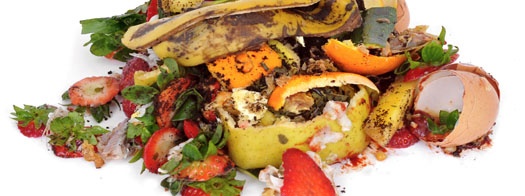
A recent article by Jennifer McClellan for Gannett reported that:
- Food waste is at an all-time high in this country.
- Food is the number one trash component in America’s landfills.
- 63 million tons of food is wasted across the country annually.
- 30% of the food produced in the U.S. ends up in the trash.
- Each American tosses away about 240 pounds of food every year.
- A family of four loses more than $1,500 a year to wasted food.
“There are huge resource implications of how much we throw out,” said Dana Gunders, lead scientist for the National Resource Defense Council’s food-waste research. “There’s the water and environmental resources that were used to grow or raise that food. Did you know that trashing one egg represents 55 gallons of wasted water? The gas from landfill decay contributes more to climate pollution than all the cars in Georgia. Plus, the gas it took to ship and the materials it was packaged in.” And according to the National Institutes of Health, consumers throw away up to 50% more food today than they did in the 1970s.
WHAT IS GOING ON?
Scholars at John’s Hopkins University wanted to find out American’s perceptions of their own waste habits. Their consumer survey, “Wasted Food: U.S. Consumers Reported Awareness, Attitudes, and Behaviors,” reported that the most common reasons given for discarding food were concerns about food-borne illness and a desire to eat only the freshest food. “One of the biggest challenges overall is that food waste is fairly invisible,” Gunders said. “We’re accustomed to scraping plates at the end of dinner, cleaning the fridge out every so often and not finishing everything on our plates. Food goes to waste in little bits here and there, and it makes it hard to see.”
The survey also revealed that we waste food because there’s confusion over expiration date labeling, sell-by dates, use-by dates, freeze-by dates, and because consumers are loathe to eat misshapen or blemished fruits. “It’s a moral conundrum,” Gunders said. “There’s a certain disrespect you show when you just throw food away.” And it’s all happening while our neighbors are hungry.
WHAT CAN BE DONE?
- Making food waste more visible has been the cause of passionate non-profits for decades.
- Universities hold forums and study the issue from a sustainability perspective.
- Local governments like San Francisco are adopting aggressive anti-waste goals. The city has set a goal of zero waste by 2020. In other words, 100% of waste is recycled or composted.
- At the federal level, the U.S. Department of Agriculture have set themselves a goal of reducing food waste across the country by 50% by 2030.
WHAT YOU AND I CAN DO
As Gunders said, “Food goes to waste in little bits here and there, and it makes it hard to see.” Experts suggest that each American might take small immediate steps that can have a substantial impact on overall food waste.
- Don’t cut fruits and vegetables until you’re ready to eat them. Chopped foods spoil faster than whole foods.
- Know what you have. Keep a list of what’s sitting in your fridge, so you can plan meals.
- Mark down the dates you purchased whole foods so you can prioritize what to eat first.
- Freeze foods you don’t plan to use within a week.

